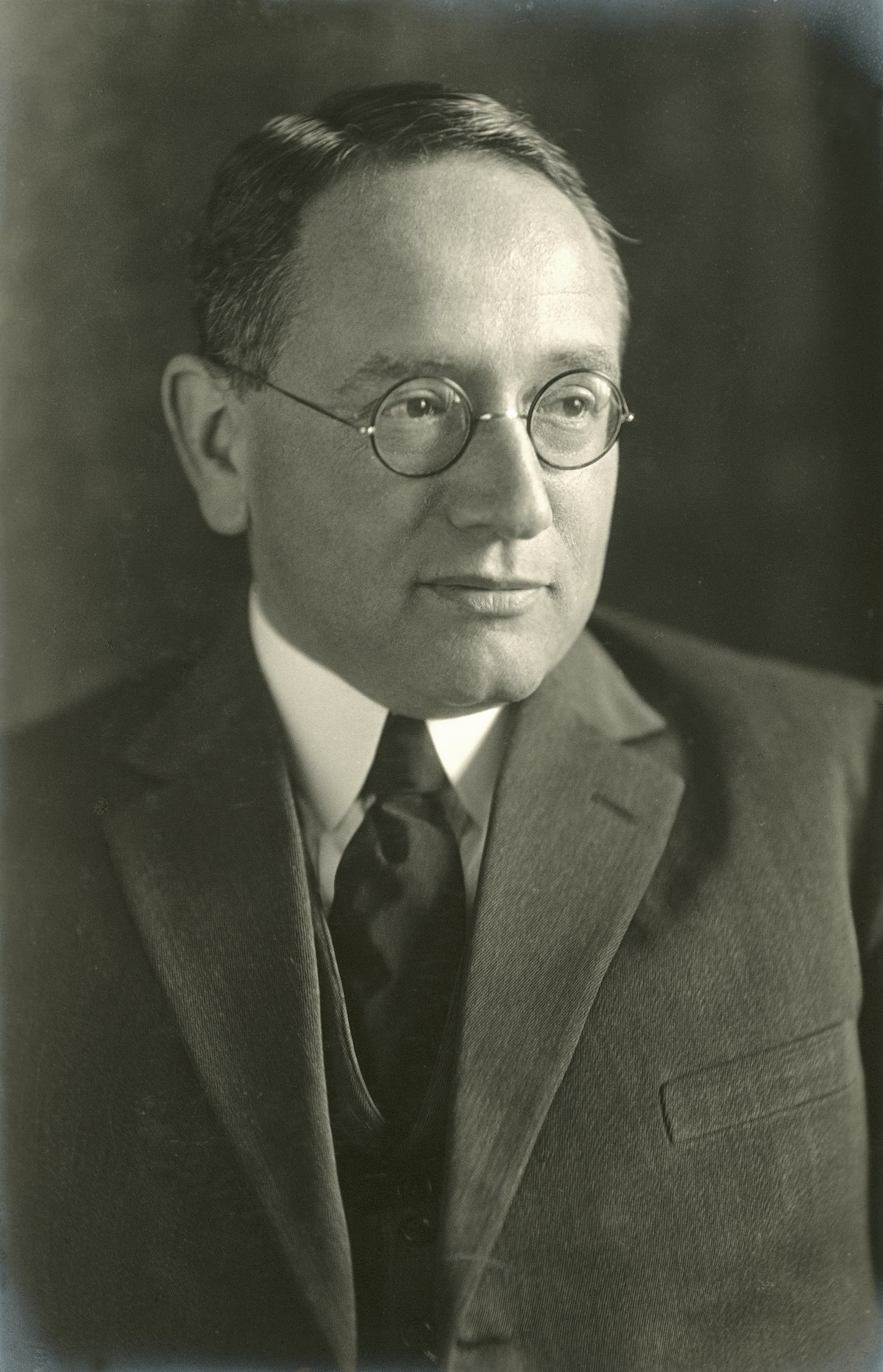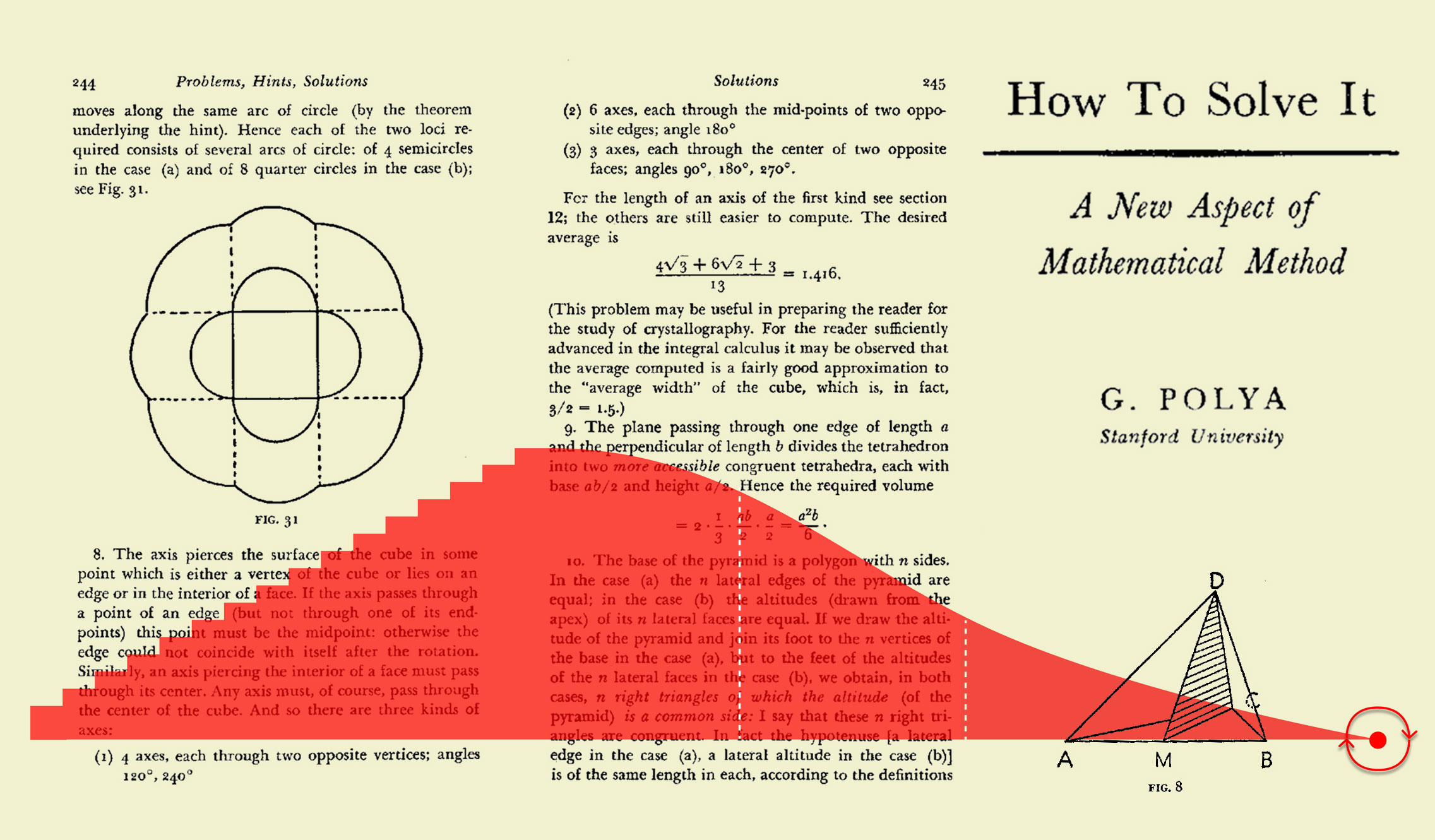How to solve it
Marton Trencseni - Thu 01 August 2024 - Meta
Introduction
George Pólya was a Hungarian (Pólya György) mathematician who made significant contributions to the fields of mathematics and mathematics education. Born in 1887, Pólya is best known for his work in heuristics, the study of problem-solving techniques, and for his influential book How to Solve It which outlines general strategies for tackling mathematical problems. His approach encouraged students to think creatively and use analogies and simplifications to understand and solve problems. Pólya's ideas have had a lasting impact on mathematics education, inspiring educators to focus on teaching problem-solving skills alongside mathematical content. Despite the ongoing debate about the effectiveness of general problem-solving strategies, Pólya's work remains a cornerstone in the field of mathematical pedagogy.

How to solve it
The main points of Pólya's famous book can be summed up as:
- Understand the Problem: Pólya emphasizes the importance of thoroughly understanding the problem before attempting to solve it. This involves identifying what is known, what is unknown, and the conditions or constraints of the problem.
- Devise a Plan: Once the problem is understood, the next step is to devise a plan for solving it. Pólya suggests using strategies such as looking for patterns, drawing diagrams, simplifying the problem, and breaking it down into smaller, more manageable parts.
- Carry Out the Plan: This involves executing the chosen strategy systematically and carefully. Pólya advises checking each step for correctness and ensuring that all aspects of the plan are covered.
- Review and Reflect: After solving the problem, Pólya encourages reviewing the solution process and the outcome. This step is critical for understanding why the solution works, learning from mistakes, and considering alternative methods or improvements.
- Heuristic Techniques: Pólya introduces heuristic techniques like working backward, considering similar problems, and generalizing results, which can be applied across various problems to enhance problem-solving skills. These strategies are meant to stimulate critical thinking and creativity in approaching mathematical challenges.

Polya's heuristics
The heuristic's from point #5 above are:
- Analogy: Find a similar problem and solve it to gain insights into your current problem.
- Auxiliary Elements: Introduce new elements into the problem to move closer to a solution.
- Generalization: Identify a broader problem that encompasses your original problem, and solve it to find a solution.
- Induction: Derive a general principle or solution by examining specific examples related to the problem.
- Variation of the Problem: Modify the problem to create new versions, solving these can provide clues to solving the original problem.
- Auxiliary Problem: Identify and solve a related subproblem, which can aid in solving the main problem.
- Pattern Recognition: Look for patterns in related, previously solved problems to help solve the current one.
- Specialization: Narrow down the problem to a more specific case that is easier to handle.
- Decomposing and Recombining: Break down the problem into smaller parts and then recombine them in a new way.
- Working Backward: Start from the desired solution and work backward to find a pathway to it.
- Draw a Figure: Create a visual representation of the problem to better understand and solve it.
Teaching general problem-solving skills is not a substitute for teaching math
The 2010 paper titled Teaching general problem-solving skills is not a substitute for teaching math by John Sweller, Richard Clark, and Paul Kirschner cites Pólya's work but takes another position.
In their view, problem-solving is central to mathematics education, yet the effectiveness of teaching general problem-solving strategies is widely misunderstood. Despite the influential work of educators like Pólya, according to the authors recent research has shown that these general strategies lack empirical support. Reform curricula often prioritize these strategies, mistakenly believing they can replace or supplement traditional mathematical instruction. However, evidence suggests that expertise in problem-solving arises from extensive domain-specific knowledge rather than general strategies. This introduction underscores the importance of direct, explicit instruction and the role of worked examples in effectively teaching mathematical problem-solving skills.
Their points in more detail:
- Central Role of Problem Solving in Mathematics: Problem-solving is a core component of mathematics education, but recent research suggests that the nature of problem-solving skills is misunderstood.
- Misconception about General Problem-Solving Strategies: Despite the widespread belief that general problem-solving strategies (e.g., those suggested by Pólya) are learnable and teachable, there is no systematic evidence supporting their effectiveness.
- Empirical Evidence and Reform Curricula: Current "reform" curricula often ignore the lack of supporting data for general problem-solving strategies and misunderstand their role in cognition, suggesting that reducing mathematical content in favor of general strategies is effective, which evidence disputes.
- Learning Mathematics Effectively: Historical observations show that mathematicians learned problem-solving through direct, explicit guidance rather than discovering solutions independently, indicating this is a more efficient learning method.
- Domain-Specific Knowledge: Research, particularly in chess, reveals that expertise comes from recognizing patterns and storing domain-specific knowledge rather than from general strategies. This is applicable to mathematics as well.
- Schema Theory in Learning: Long-term memory stores complex, integrated information (schemas), which are critical for problem-solving. Effective problem solvers have extensive domain-specific schemas, not general problem-solving skills.
- Teaching Domain-Specific Skills: Effective mathematical problem-solving is achieved by teaching specific problem-solving strategies for particular problems, rather than general strategies.
- Automatic Use of Means-Ends Analysis: People naturally employ means-ends analysis for novel problems, identifying differences between the current state and the goal. However, this strategy is not something that can be explicitly taught.
- Effectiveness of Worked Examples: Research indicates that studying worked examples is more effective and efficient for learning problem-solving skills than practicing without such examples, as it reduces cognitive load and aids memory transfer.
- Direct, Explicit Instruction: The overwhelming evidence supports direct, explicit instruction through worked examples in mathematics education, particularly for novice learners, to enhance problem-solving skills and overall learning efficiency.
Conclusion
As an avid lifelong learner, I see no conflict between the two approaches. General problem-solving approaches are good to keep in mind, whereas any serious practicioner of a subject knows that deep domain knowledge is necessary. For example, when writing a C++ program, we better knows the ins-and-outs of C++, and the algorithm or product we're implementing. However, in the process of implementation, sometimes we take an iterative approach; for example, we may first implement a more naive or specialized, but surely correct version of an algorithm, and then move on to implement a more generalized, optimized version. The original naive implementation is a useful mental pathway, and can also be used for later testing.
It's also worth noting that Pólya himself was not a naive proponent of general problem-solving skills. As a professor of mathematics at ETH Zurich and later Stanford University, he wrote Calculus textbooks with worked examples, such as his two volume 1925 Problems and Theorems in Analysis.
The full paper is below: